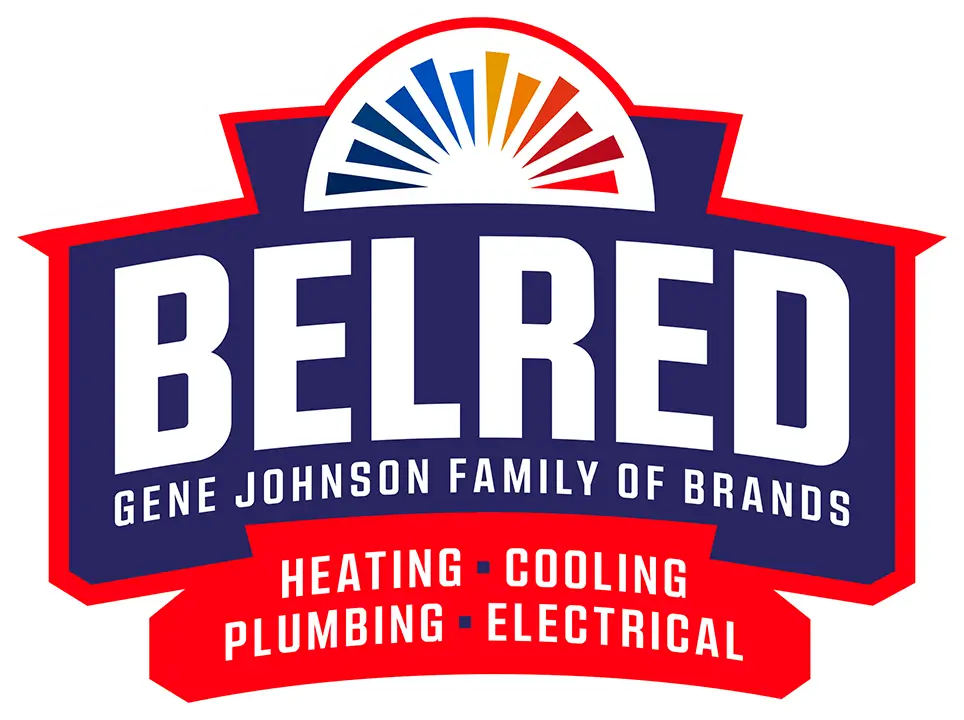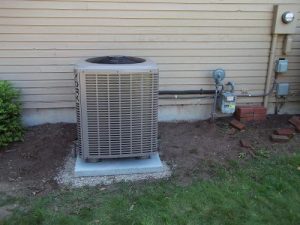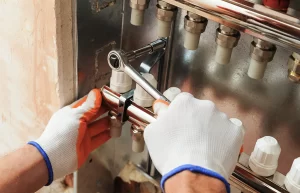Oh boy, we’ve all been there – staring down that unmoving puddle in your bathroom sink with a sinking feeling of dread. Yep, you’ve got yourself a classic clogged drain situation on your hands!
And if you’re a Snohomish County homeowner, you’re probably all too familiar with this plumbing plight. Many homeowners experience stubborn sink clogs around these parts because of our region’s notoriously hard water and older home plumbing systems.
But you don’t need to panic-dial the plumber just yet! There are things you can do as a homeowner to deal with a clogged bathroom drain. With some simple preventative maintenance and a few trusty unclogging tricks up your sleeve, you can keep those pipes flowing freely without the sky-high repair bills.
Trust us, getting ahead of nasty drain clogs is way better than waiting for an overflow disaster to strike! Just a little elbow grease can save you a whole lot of headache (and cash) in the long run.
Common Causes of Bathroom Sink Clogs and How to Prevent Them
Alright, before we dive into the nitty-gritty unclogging methods, let’s get real about what’s actually causing all those maddening sink backups in the first place. The more you understand these clog culprits, the better equipped you’ll be to wage war against them.
Hair
I’m sure this one’s no surprise – all that hair constantly going down the drain is public enemy #1 for most clogs. Those sneaky little strands have a way of tangling together and catching all sorts of other gunk until bam! You’ve got yourself one matted, hairy blockage.
Prevention Tip: Do yourself a favor and pick up a cheap little hair catcher or drain strainer from the store. They will trap all that hair before it has a chance to wreak havoc on your pipes.
Soap Scum
Here’s another gunky menace – soap scum buildup. All that soapy residue from showers and hand-washing gets left behind, combining with mineral deposits from our hard water to form a nasty, pipe-coating sludge over time. Not a fun combo!
Prevention Tip: Make flushing your sinks with some piping hot water a weekly habit to help dissolve and rinse away any gunky buildup. And consider switching to liquid hand soaps and body washes – bar soaps are way worse for leaving behind scum.
Toothpaste
Toothpaste might not seem like a huge threat, but that thick, gloppy texture is just asking for trouble if you’re not careful. All it takes is a little bit of that pasty gunk drying out and hardening in your pipes before it starts catching everything else.
Prevention Tip: Do your drains a solid and take an extra 30 seconds to thoroughly rinse out all toothpaste remnants from your sink after brushing. A quick swish of hot water should do the trick!
Other Debris
Last but not least, let’s talk about all the random little objects and debris that somehow find their way into sink drains. I’m talking cotton swabs, floss, hair ties, you name it! Anything small and solid like that can easily get lodged, catching hair and gunk to create a total blockage party.
Prevention Tip: Be mindful of what’s around the sink area and keep it clear of clutter. Using drain stoppers and strainers is also a smart way to keep those little rogue objects from escaping down the drain in the first place.
The bottom line? A little preventative care and drain-friendly habits go a long way! Staying ahead of all that hair, scum, toothpaste and debris buildup is way easier than dealing with one massive clogged sink nightmare. Just nip those pesky clog culprits in the bud!
DIY Methods to Unclog a Bathroom Sink Drain
Okay, you’ve got the lowdown on what’s likely causing your clogged sink woes. Now for the fun part – actually busting through that blockage! Don’t call the plumber just yet. There are plenty of easy, inexpensive DIY methods any homeowner can try to get that water flowing freely again.
Using a Drain Snake
For tougher clogs, you’ll need to get in there and physically pull out the gunk. A simple plastic drain snake from the hardware store is perfect for fishing out hair and debris. Just unscrew the drain stopper, feed it in as far as it’ll go, then slowly crank and pull it back out. Any nasty buildup should come right out with it!
Homemade Solutions (Baking Soda and Vinegar)
Here’s a fun science experiment for you – that classic baking soda and vinegar combo isn’t just for funky fridge smells. It’s actually a great natural drain cleaner too!
Start by pouring 1/2 cup of baking soda directly down the drain, then slowly pour in 1 cup of vinegar. Let that chemical reaction bubble up and do its thing for 10-15 minutes before chasing it all down with a kettle of boiling water. The acid in the vinegar helps break down hair, soap scum, you name it!
Using a Plunger
Don’t underestimate the power of an old-school plunger! For lighter clogs, that simple tool can work wonders. Just remove any drain stoppers or strainers first. Fill the sink about 1/3 full with water to create a nice tight seal around the plunger, then vigorously plunge straight up and down for 15-20 seconds. All that forced air and water pressure just might dislodge the blockage.
Pouring Boiling Water
Sometimes all you need is a little hot heat! Carefully pour a few kettles’ worth of boiling water directly down the drain. That scorching temp can help dissolve soap, hair, and grease buildup that’s causing a slow drain. Just be careful not to burn yourself in the process.
Chemical Drain Cleaners
When everything else fails, you might be tempted to reach for those harsh chemical drain cleaners. We’d caution against this as a first resort. While they can sometimes power through the most stubborn of clogs, those toxic chemicals can also do serious damage by corroding your pipes over time. Not to mention the nasty fumes! There are much safer, more eco-friendly methods to try first.
Using a Wet/Dry Vacuum
Here’s a nifty trick – sometimes you can straight-up vacuum that clog right out! Rent or buy a small wet/dry shop vacuum, then securely cover the drain opening with a wet rag or plunger. Flip that vacuum to the highest suction setting and let it rip! With any luck, the powerful suction will pull the clog right out of the drain.
Cleaning the P-Trap
If you’ve tried every other unclogging method under the sun with no luck, it’s probably time to roll up your sleeves and get in there. That u-shaped pipe underneath your sink is called the p-trap, and it’s a prime culprit for nasty clogs.
Simply place a bucket underneath to catch any water, unscrew the p-trap connections, and check for any blockages you can manually remove and clean out. While you’re at it, give those pipe sections a good scrubbing too before reassembling.
Wire Hanger Method
Last but not least, here’s a classic MacGyver move – using an unbent wire hanger to physically dislodge and hook out whatever is clogging your drain. Just straighten out that hanger as much as possible, then carefully feed the end down into the drain opening as far as it will go.
Once you feel resistance from the clog, start gently moving it around to try and snag the blockage so you can pull it out. Just be careful not to scratch up your sink!
Those are some of the top clog-busting tricks any determined homeowner can try before waving the white flag. From baking soda science experiments to good old-fashioned plunger power, you’ve got an arsenal of DIY methods to unleash on that stubborn sink drain. Just don’t be a hero – if you’ve tried every trick in the book with zero success, it’s probably time to call in professional reinforcements.
Get Help With Your Bathroom Sink Clogs in Snohomish County
Tried every trick in the book but that bathroom sink is still clogged? Or maybe you’re stuck in a vicious cycle of unclogging it, only for the drain to back up again a few weeks later. When you’ve reached the end of your rope, it’s probably time to throw in the towel and call a pro for backup.
When DIY Just Isn’t Cutting It
If basic plunging, snaking, and baking soda volcanos aren’t doing the trick, there’s likely a bigger plumbing issue at play. Things like cracked pipes, invasive tree roots, or years of gunky buildup could be the real culprits behind that stubborn clog. And those are problems no homeowner should try tackling solo!
Signs You Need a Drain Cleaning Pro
Here are some glaring red flags that it’s time to quit the DIY fight and get an expert drain cleaning crew out to your Snohomish County home:
- You’ve tried every unclogging method you can think of with zero progress
- Multiple drains or fixtures are backing up
- There’s a rotten egg smell wafting from the drain
- You spot any water leaks or moisture around the pipes
- The clog is an ongoing, recurring issue no matter what
Why You Need the Pros
As tempting as it is to keep trying to fix it yourself, persistent clogs need professional-grade tools and know-how to get resolved properly. Your local plumbers have access to serious power equipment like hydro-jetters that blast through blockages with extreme high-pressure water streams. They also use cutting-edge camera tech to get a crystal clear look at what’s going on deep in those pipes.
Not only can they quickly locate and demolish even the most stubborn clogs, but they’ll do a thorough inspection of your whole plumbing system. That way, they can diagnose any bigger issues like cracked pipes, mineral buildup, or tree root invasions that are likely the real root cause behind your clogged sink headaches. With their professional tools and training, they’ll get your drains flowing smoothly again and keep them that way!
Those DIY unclogging methods are great for quick fixes, but sometimes you just need to bite the bullet and call in backup. Save yourself the stress and mess by treating your drains to a professional cleaning at the first signs of a stubborn clog!
FAQs about Bathroom Sink Clogs
Even after trying all the unclogging tricks and reading up on professional solutions, you might still have some lingering questions about dealing with clogged bathroom sinks. No worries, we’ve got you covered! Here are the answers to some of the most commonly asked drain clog queries.
How often should I clean my bathroom sink drain to prevent clogs?
An ounce of prevention is worth a pound of cure when it comes to drain clogs! Getting on a regular cleaning routine can go a long way in stopping gunky buildup before it starts.
At the very minimum, you’ll want to give your bathroom sink drain a monthly cleaning using one of those trusty baking soda/vinegar treatments or a drain cleaning brush. If you’ve got a house full of long-haired people, you might need to up that to every 2-3 weeks.
The more proactive you are about clearing out hair, soap scum, and debris, the less likely you’ll be dealing with total drain stoppages.
Are chemical drain cleaners safe to use?
Those harsh chemical drain cleaners should always be an absolute last resort. While they can sometimes power through the most stubborn of clogs, the truth is their toxic ingredients can also do serious damage by corroding your pipes over time. Not to mention the nasty fumes!
There are much safer, more eco-friendly methods like baking soda/vinegar, plunging, and snaking that you should try first before reaching for the heavy chemical artillery. If you absolutely must use a drain cleaner product, look for an eco-friendly, plant-based formula.
Can clogs in bathroom sinks cause damage to my plumbing system?
Absolutely! While a single clogged drain is annoying, leaving it totally untreated could potentially lead to some nasty plumbing problems down the line. As the clog worsens, it can create excessive pressure and strain on your pipes, potentially causing cracks, leaks, or even bursts over time. Backed up water can also start to corrode your pipes from the inside out. Not only that, but letting sink clogs fester could allow sewer gases and odors to back up into your home – nobody wants that!
The bottom line is, you don’t want to ignore or put off dealing with a clogged sink drain for too long. Nip it in the bud to avoid those bigger headaches.
So there you have it – the keys to preventing clogs, when to use chemical cleaners, signs you need pro help, and why you shouldn’t let those sink backups linger. Just a little clogged drain knowledge can go a long way in keeping your plumbing system happily flowing for years to come!
Don’t Let a Clogged Sink Ruin Your Day – Call BelRed in Snohomish County
Look, we’ve all been there – stubbornly plunging and snaking a clogged bathroom sink until we’re red in the face with zero progress. Those DIY unclogging methods are definitely worth trying first to save some cash. But sometimes, you just have to know when to throw in the towel and get professional help before you lose your mind.
A persistently clogged drain isn’t just annoying – it’s a sign of bigger plumbing issues that could lead to a total disaster if not treated properly. Don’t let it get to that point! When you’ve reached the end of your rope, put down the drain snake and pick up the phone to call our experts at BelRed.
Save yourself the headache and potential for costly water damage. Dial (855) 345-6161 at the first sign of a clogged sink you can’t fix yourself. Don’t let that drain ruin another day – let our BelRed pros get it flowing like new again!







